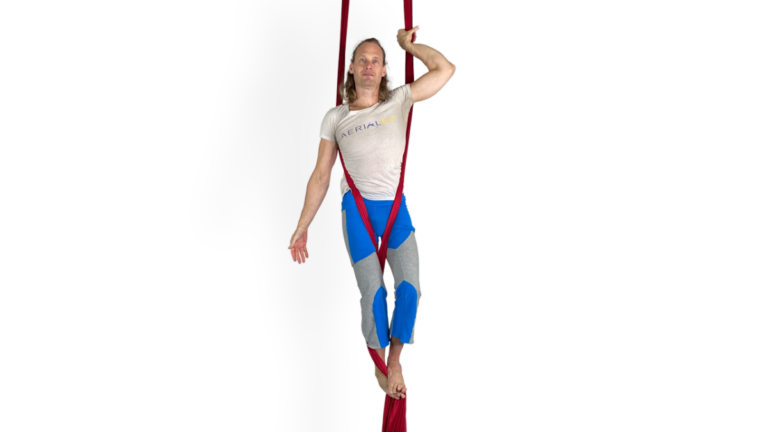Silks
|
|

Already a Member? Log in to continue.
Single Arm Slow Descent is an elegant descent where the body position creates the support. This descent builds from Basic Stand Through the Middle, and we teach it to Level 1 students who are comfortable climbing and already comfortable with Inchworm Descent.
This descent is best done very slowly, with support at the hips, shoulders, and feet. This descent can be nice when combined with Basic Climb Through the Middle. This is an enjoyable descent and a good way to teach creating support across multiple body parts to keep the arms and grip more relaxed.
Become an Aerial Fit Online member to access the video for Single Arm Slow Descent. This in-depth video will explain how to properly train this skill. It also includes cross references to the most important Building Blocks, Common Mistakes, Related Drills, Ground Drills, Variations, Next Steps and Sequences.
Already a Member? Log in to continue.
Some of the most important aerial silks skills, related movements, and prerequisites from our aerial video tutorial library that students should be very comfortable doing to succeed at Single Arm Slow Descent.




These are the most common mistakes we see with students when they are learning how to do the aerial silks skill Single Arm Slow Descent and detailed directions on how to fix these problems to make the skill look and feel easy.




These similar aerial silks skills and aerial drills are helpful to troubleshoot and help with problems. Students don't need to have mastered the Single Arm Slow Descent to work on these related skills and drills. These drills may help your students make important connections and answer the question "What am I doing wrong?".




These are some of our favorite ground drills for aerialists for Single Arm Slow Descent. They can be used as part of the ground warm up or as part of the aerial class teaching progression.




These are different variations of Single Arm Slow Descent. Students should be very comfortable with the current skill before working on these different or more advanced variations. They can be used for further exploration, managing students with different levels and adding variety to aerial silks choreography.




These are the next steps we teach to our aerial silks students after they’re comfortable with Single Arm Slow Descent. The next steps can be started right away and they lead toward specific future goals which are often the most advanced aerial silks skills.




These are some of the more advanced silks skills that build on the strength and control taught in Single Arm Slow Descent. They are not the next immediate steps, but rather long term planning goals.
These are aerial silks sequences, transitions, and combinations that include the aerial skill Single Arm Slow Descent. They are fun, creative, and challenging sequences from our aerial video tutorial library.



